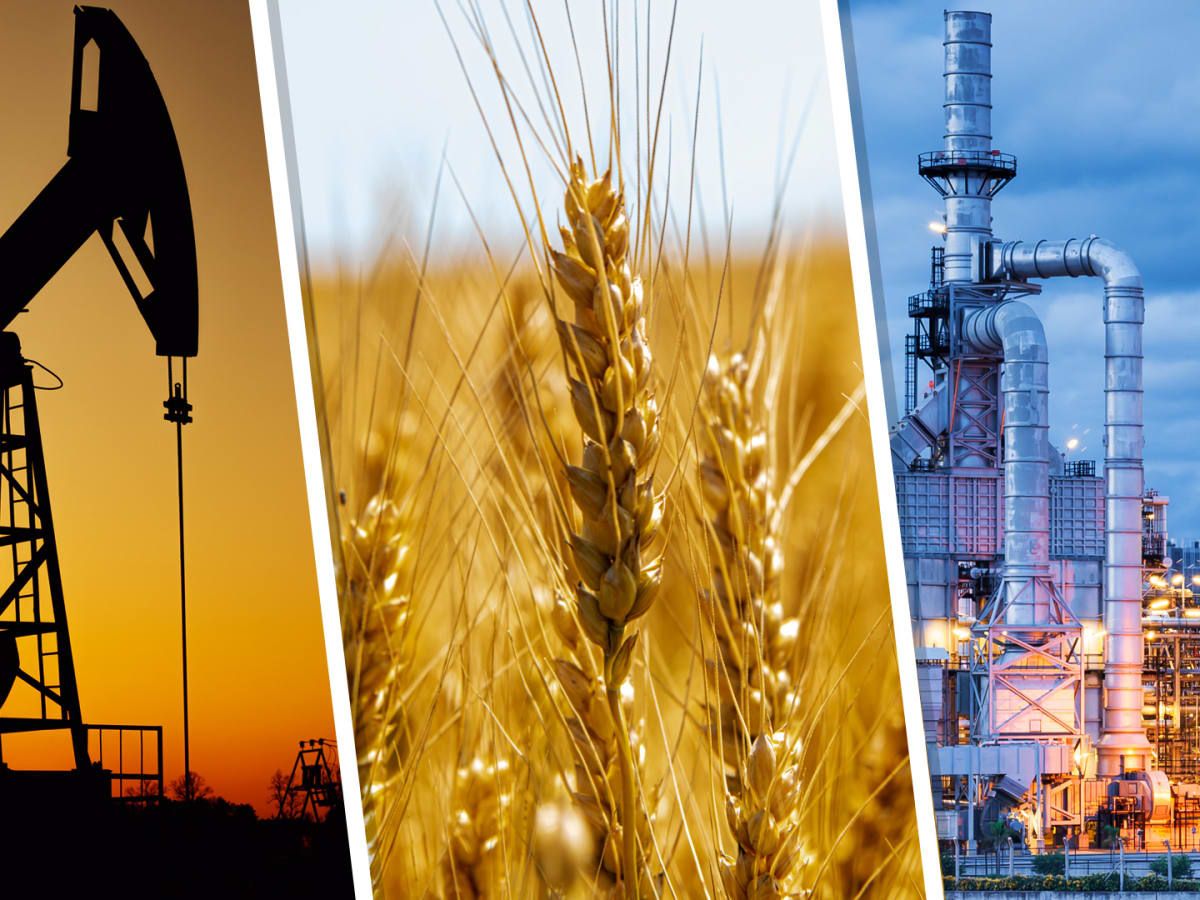Strong fluctuation in commodity markets: overall decline expected in prices next week

By News Centre
The commodity market left behind a week of strong fluctuations fueled by a lack of direction, Azernews reports.
Growing hopes that the US Federal Reserve has ended its cycle of rate hikes, ongoing concerns about global economic activity, production expectations, and weather-related factors were prominent factors in the commodity market last week.
As the Fed's interest rate decision and Chairman Jerome Powell's statements were in line with market expectations, risk appetite grew in the markets.
The Fed last week left its federal funds rate unchanged between the 5.25%-5.5% target range, as expected by the market.
A mixed course was seen in precious metals last week.
Gold and palladium dropped 0.6% and 0.3%, respectively, while silver and platinum increased 0.4% and 2.9%, respectively.
Brent oil declined 4.2% and natural gas prices traded on the New York Mercantile Exchange ended the week with a gain of 11.1%.
Last week, prices rose 0.9% in copper, 0.1% in lead, 1.5% in aluminum, 2.5% in zinc, while nickel fell 1.5%.
Primary commodity prices declined by 7.5 percent between February and August 2023. The widespread decline was led by base metals, with prices falling 15.7 percent, and European natural gas prices, plummeting 36.0 percent.
Moreover, overall commodity prices are projected to fall 4.1% next year. Prices of agricultural commodities are expected to decline next year as supplies rise. Prices of base metals are also projected to drop 5% in 2024. Commodity prices are expected to stabilize in 2025.
According to some speculations, conflict in the Middle East is another reason that could bring shock to global commodity markets. Impact limited so far but energy-market turmoil could intensify food insecurity. The report provides a preliminary assessment of the potential near-term implications of the conflict for commodity markets. It finds that the effects should be limited if the conflict doesn’t widen. Under the Bank’s baseline forecast, oil prices are expected to average $90 a barrel in the current quarter before declining to an average of $81 a barrel next year as global economic growth slows.
Besides that, the outlook for commodity prices would darken quickly if the conflict were to escalate. The report outlines what might happen under three risk scenarios based on historical experience since the 1970s. The effects would depend on the degree of disruption to oil supplies. So according to some reliable sources, in a “small disruption” scenario, the global oil supply would be reduced by 500,000 to 2 million barrels per day—roughly equivalent to the reduction seen during the Libyan civil war in 2011. Under this scenario, the oil price would initially increase between 3% and 13% relative to the average for the current quarter - to a range of $93 to $102 a barrel.
“The latest conflict in the Middle East comes on the heels of the biggest shock to commodity markets since the 1970s—Russia’s war with Ukraine,” Indermit Gill, the World Bank’s Chief Economist and Senior Vice President for Development Economics, said. “That had disruptive effects on the global economy that persist to this day. Policymakers will need to be vigilant. If the conflict were to escalate, the global economy would face a dual energy shock for the first time in decades—not just from the war in Ukraine but also from the Middle East,” he added.
“Higher oil prices, if sustained, inevitably mean higher food prices,” Ayhan Kose, the World Bank’s Deputy Chief Economist and Director of the Prospects Group, said. “If a severe oil-price shock materializes, it would push up food price inflation that has already been elevated in many developing countries. At the end of 2022, more than 700 million people—nearly a tenth of the global population—were undernourished. An escalation of the latest conflict would intensify food insecurity, not only within the region but also across the world,” Kose added.
As regards the ongoing conflict, some countries have established strategic petroleum reserves, set up arrangements for the coordination of supply, and developed futures markets to mitigate the impact of oil shortages on prices. These improvements suggest that an escalation of the conflict might have more moderate effects than would have been the case in the past.
Policymakers nevertheless need to remain alert, the report says. Some commodities—gold in particular—are flashing a warning about the outlook. Gold prices have risen about 8% since the onset of the conflict. Gold prices have a unique relationship to geopolitical concerns: they rise in periods of conflict and uncertainty often signaling an erosion of investor confidence.
---
Follow us on Twitter @AzerNewsAz
Here we are to serve you with news right now. It does not cost much, but worth your attention.
Choose to support open, independent, quality journalism and subscribe on a monthly basis.
By subscribing to our online newspaper, you can have full digital access to all news, analysis, and much more.
You can also follow AzerNEWS on Twitter @AzerNewsAz or Facebook @AzerNewsNewspaper
Thank you!
